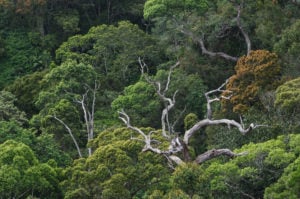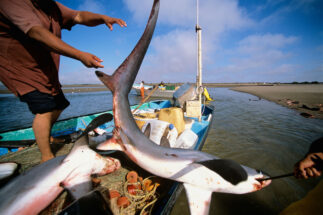Sustainable investing is making waves across all asset classes in financial markets today. In equities, we see ethical or ESG (environmental, social and governance) funds outperforming their conventional counterparts. In infrastructure, renewable energy accounts for half of all deals. In debt markets, the value of sustainable debt including green loans, bonds and sustainability-linked bonds, almost doubled last year.
Even within this rapid change a new metric is capturing investor attention: biodiversity. Of course, the environmental threat of climate change is well known, and the financial risks associated with both damage from more frequent extreme weather, and from being left behind as markets and consumers go green, are well understood. Understanding of the social and financial impact stemming from nature loss is also growing. The drivers of nature destruction are accelerating, putting at risk vital benefits to people, such as reliable water, fish and other wild food harvests, soils, crop yields, pollination and carbon sequestration.
In this series of 10 articles, we explore the systemic financial risk posed by biodiversity loss, how financial institutions have a unique responsibility, what they are already doing about it, and the financial opportunity. Biodiversity is not considered in the vast majority of financial decisions taken globally today. As a result, financial institutions are increasingly exposing themselves to risks both from harming nature, and as a result of their dependence on vulnerable nature benefits.
Among these articles, we report on the first ever valuation of biodiversity-related risks among the world’s development banks, finding that these are greatest in Asia. We report on the threat of litigation facing investors that continue to finance biodiversity loss. We hear from an advisor to Norway’s Oil Fund, on what some investors are already doing to stem such impacts, and about a global initiative to consolidate the measurement of biodiversity-related risks, around a common set of reporting standards. Tracking technologies are catching up, to aid such measurement. We report on the army of data warriors who are working to link individual consumer goods with commodities like soya, and in turn with the frontline of forest destruction. And we hear how a new digital mapping tool, in combination with blockchain, might track every tree and log on Earth. We show important near-term wins, for example from agricultural subsidy reform in China, to shift support from nature-destructive farming to sustainable crop yields and incomes. We describe the biodiversity opportunity, only beginning to be realised, in hugely scalable, natural capital investing, from forestry to sustainable fisheries and regenerative farming. And we discover the opportunity to tackle two crises, the emerging sovereign debt crisis and nature destruction, at once, through an innovative approach to reward countries with more forgiving debt terms, in return for nature conservation and restoration.
These articles by leaders in their fields all recognise that biodiversity loss is a global threat today, because regulators and investors until now have largely chosen to ignore nature in public and private finance decisions. The authors demonstrate that a large, concerted effort is underway to make biodiversity risk a significant new metric in sustainable investing. They show that investors will benefit from being on the front foot to meet these changes.









